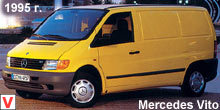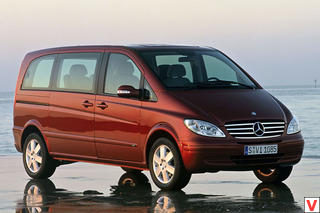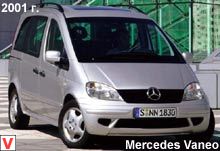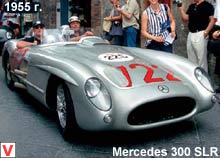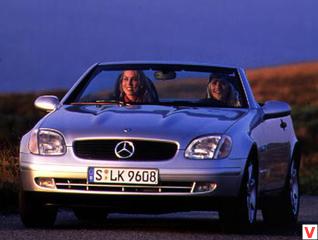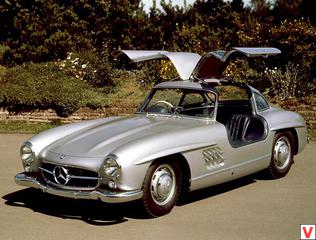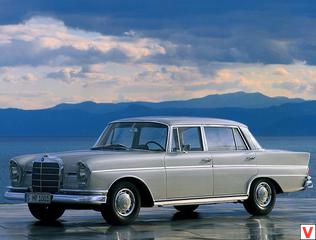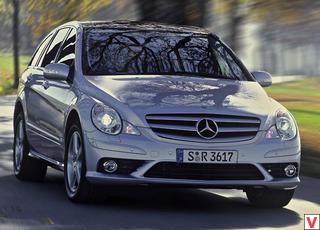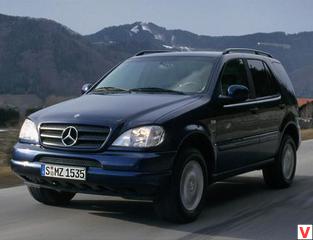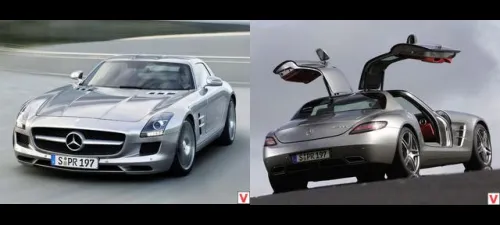
Mercedes SLS AMG - German supercar, which is the fastest car in the model range of Mercedes. The car became the successor to the Mercedes-Benz SLR McLaren and the ideological heir to the Mercedes-Benz 300SL. A model is being manufactured at the largest Mercedes enterprise in Sindelfingen. The engines with the name plate of the master, traditionally assembled by hand, come from Offenbach, the aluminum bodies come from the Magna factory in Graz, Austria.
The SLS AMG was shown to the general public in the fall of 2009 at a motor show in Frankfurt. The car went on sale in 2010. The length is 4638 mm, the width is 1939 mm, the height is 1262 mm and the wheelbase is 2680 mm. For the first time, experts from Mercedes-Benz and AMG have created a car whose chassis and body are made of aluminum. In contrast to the traditional use of steel, this has significantly reduced the weight of the car - its curb weight (without a driver) according to DIN is only 1620 kg.
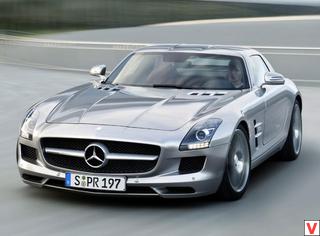
The bodywork developed from scratch is based on an aluminum space frame weighing only 241 kg. Moreover, the rigidity of the structure of the "winged" metal is even higher than that of a similar steel structure. After all, the aluminum frame are sheet and profiles are much thicker (in cross section) than sheet steel.
The combination of lightweight construction and high strength of the material provides the car with impeccable dynamics. The design of the Mercedes SLS AMG reflects the principle of creating modern sports cars: a nearly two-meter hood, a flat, shifted back cab and a short rear part with a retractable wing are the same dynamic expression as the long wheelbase, wide track and large wheels. A special feature of the supercar is the door opening mechanism, which is called the “Seagull's wing” - the doors do not open to the side, like many cars, but rather swing upwards, which considerably facilitates the landing-landing on a narrow parking lot (the doors are only 45 cm away from the body).
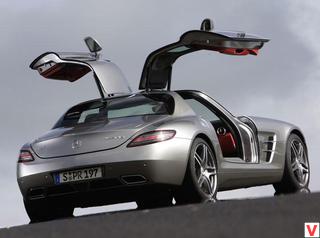
Salon is fine: a classic dashboard with two dials of a speedometer and a tachometer, an LCD display, under the steering wheel of a company Mercedes lever and metal petals, tugging on which, you force the box to quickly but gently switch speeds. In the bucket chair, the driver's body is fixed, and it is comfortable to sit, but there is no place around to put a small thing like a camera or small bag. The longitudinally mounted petrol V-figure eight of 6.2 liters has a capacity of 571 liters. from. at 6800 rpm and torque of 650 Nm at 4750 rpm. The engine is paired with a Getrag seven-speed robotized two-clutch gearbox. Clutch mounted in front of the main gear, gears - for her.
The box has 4 modes of operation: economical, sporty, sporty +, manual. Also installed a limited slip differential. From a spot to a hundred, the Mercedes SLS AMG can accelerate in 3.8 seconds. Its maximum speed is 317 km / h. The average consumption on the passport is 13.2 liters per 100 kilometers. The engine is located low behind the front axle, and the dual-clutch gearbox is located at the rear axle, following the principle of the spaced-apart layout of the drive units. Between them in a protective tube (Torgue Tube) rotates the drive shaft, made of high strength and unusually light carbon fiber.
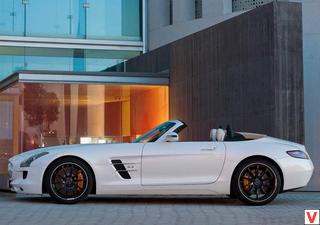
This technical trick allowed us to optimally distribute the mass along the axes - in the ratio: 47% in front and 53% in the rear. The V8 engine and the gearbox are interconnected by a rigid bending connection (protective tube) and form virtually a single whole. Due to this, the drive shaft with a length of 1.71 m and a weight of only 4 kg, rotating at the engine speed, transfers up to 650 Nm of torque from the engine to the gearbox. The range of paint finishes for the Mercedes SLS includes nine exclusive shades.
The unique paintwork “AMG Alubeam Silver” is intended to be the highlight of the color program: thanks to a new method, the body color glitters like liquid metal. No less attractive are both matte variants of body color - “designo magno gray allanite” and “AMG magno gray sylvanite”. An extensive set of safety devices includes three-point seat belts with pretensioners and tension force limiters, eight airbags: two adaptive frontal airbags, a knee airbag for both driver and passenger, two side airbags built into the seat backs, as well as two window pads, hidden in the window sill of the doors. A little later, a roadster was made at the base of the coupe.
The official debut of the SLS AMG Roadster was held at the Frankfurt International Motor Show in mid-September 2011. When it was created, the company's specialists abandoned the doors going up, and the weight of the car decreased by more than 40 kilograms. In the process of working on the AMG model, it was necessary to solve the difficult tasks of ensuring the rigidity of the open body. Thanks to modern technology, AMG was able to make the roadster body the necessary rigidity with a mass of just 243 kg, which is practically the same as the coupe body mass.
According to the designers, it was thanks to the rigidity of the body that it was possible to provide the ability to fold and open the soft top of the roadster on the go, at speeds up to 50 km / h. The roof automatically opens and closes in just 11 seconds. The top of the car is made of soft three-layer fabric. There are three options for coloring the soft top: black, red and sandy. The developers abandoned the rigid folding body for reasons of mass and location of the center of gravity. Nevertheless, the top frame, in which a complex combination of magnesium, steel and aluminum is applied, makes it possible to operate the Mercedes-Benz SLS AMG Roadster at speeds up to 317 km / h.
Moreover, this restriction is imposed by means of electronic systems, without them the car would be capable of more. Under the hood, a Mercedes-Benz SLS AMG engine has a power of 420 kW (571 hp) and a 7-speed dual-clutch gearbox. With an open top, the SLS AMG accelerates from 0 to 100 km / h in 3.8 seconds. When developing a soft top, a lot of attention was paid to the protection from penetration of moisture and dust into the interior.
Over the long history of designing cabriolets, the design division of the Mercedes Technology Center (MTC) in the city of Sindelfingen has developed a large comprehensive testing program. The so-called "Rain test". It consists of 16 tests and no model gets into production until it all passes with an excellent rating. The interior of the Mercedes is decorated with leather accents of suede, carbon and black lacquered wood. There are no fundamental changes in terms of functionality and implementation of AMG comfort, except that the installed updated Bang & Olufsen audio system with a total power of 1 kW.
